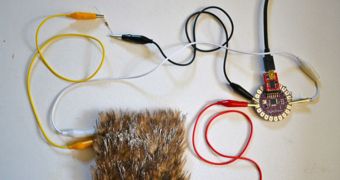University of British Columbia (UBC) researchers are currently working on a way to integrate advanced biometric sensors into the fur covering robotic pets. They say that this will help the synthetic animals sense the moods of their owners, and act accordingly.
The team has already developed a bunny that can do that. However, the machine is only capable of figuring out what its users are sensing when the latter are wired up to external biometric sensors.
What scientists want to do is integrate these sensors into the bunny's fur, so that it becomes a self-contained system. The research group explains that the chances of children wanting to play with their favorite pets while hooked to a biometric sensor reader are fairly slim.
Kids like to run around and explore, oftentimes taking their pets with. Robotics experts cannot expect the little ones to take a bulky reading device with them. Therefore, the innovative work needs to be conducted on the artificial animals themselves.
But applications for such robots extend well beyond toys. When able to sense users' emotions, the pets could easily guide the former through a series of breathing exercises, or caution the elderly to take their medication. There are very few limits to the type of sensors that can be placed on a robotic pet.
The new investigation is being conducted in the lab of UBC professor of computer science Karon MacLean. The biometric sensor itself was developed by graduate student Anna Flagg. Currently, it looks like a square blob of fur.
The team hopes to refine the technology up to a point where it will be able to recognize as many as 30 gestures. It can already tell the difference between a scratch and a path, as well as a few other gestures.
“The end goal of this would be to try to infer a person's emotional state, given how they're touching the fur. The one thing a robot can do that's different from an animal is truly be in the service of its owner and do what the owner needs it to do,” Flagg says.
Children suffering from anxiety or autism spectrum disorders could benefit considerably from such a companion, as would elderly dementia patients. In the future, it's likely that will see the development of new, practical uses for this technology, Innovation News Daily reports.
“We have ideas for adults. Probably not a 20-pound robot, but your cellphone could do this. It would be interesting to have a little companion with me that could see when I'm becoming stressed and help guide my breathing, and maybe even notice it's happening before I notice it,” Flagg adds.

 14 DAY TRIAL //
14 DAY TRIAL //